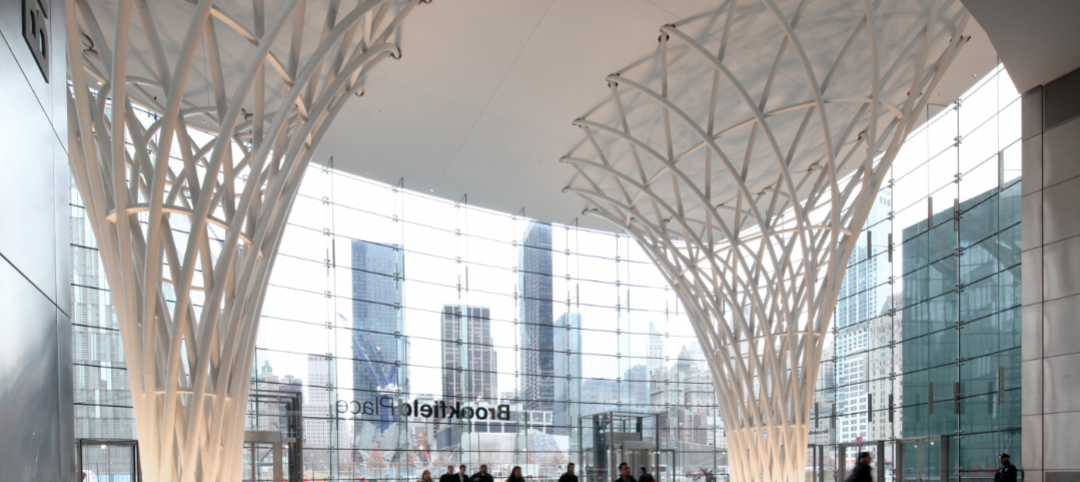Turner Construction Company, the leading general builder in the United States, today announced the results of a new Market Barometer survey that focused on environmentally-sustainable, or “Green,” building, and on sustainable practices in general. Key findings revealed that companies remain committed to constructing Green buildings, but fewer executives said their companies were likely to seek LEED certification when constructing a Green building, citing the cost and difficulty of the LEED certification process.
Brightening outlook for construction projects
Among real estate owners, developers, and corporate owner-occupants, 64% said they expect to undertake new construction projects over the next 12 months (up from 46% in the 2010 survey), and 71% said they expect to undertake renovation projects over the same period (up from 58% in the 2010 survey).
Widespread commitment to sustainable practices
Eighty-four percent of respondents said their companies were committed to environmentally-sustainable practices. Of that percentage, 56% of executives said their companies were extremely or very committed to following environmentally-sustainable practices in their operations, while an additional 33% said they were somewhat committed. In addition to citing financial reasons for this commitment, executives were most likely to cite broader considerations as extremely or very important including belief that it’s the ‘right thing to do,’ (68%), impact on brand/reputation (67%), and customer requirements (61%), along with cost savings (66%).
Reducing energy costs and operating expenses are the key drivers to green construction
Executives were most likely to cite financial factors as being important to their companies’ decisions on whether to incorporate Green features in a construction project. Respondents indicated that energy efficiency (84%) and ongoing operations and maintenance costs (84%) were extremely or very important to their decisions. However, more than two-thirds of executives also said that non-financial factors were extremely or very important including indoor air quality (74%), health and well-being of occupants (74%), and satisfaction of employees/occupants (69%). However, only 37% of executives said it was extremely or very important to their companies to minimize the carbon footprint of their buildings. This suggests that when environmental factors influence the decision to incorporate Green features, these are typically improvements to the indoor environment and its impact on the health and wellbeing of occupants and on the productivity of employees, rather than broader concerns about global environmental impacts. Respondents also indicated that impact on brand/reputation (67%) and employee productivity (67%) were important factors.
A large majority of executives said their companies would incorporate Green features if constructing or renovating a building. Eighty-one percent of executives said their companies would be extremely or very likely to invest in energy efficiency improvements if they were undertaking a construction project, while more than half said they would invest in improved indoor environmental quality (63%), improved water efficiency (57%), and Green materials (53%).
“Energy efficiency figures prominently in the decision-making process of green building primarily because of its large economic impact. Water efficiency in Green construction was seen as less important. This is in spite of a growing awareness that water is a finite resource, both in its operational use and its role in the production of goods and materials. While the direct economic impact of water efficiency is less than the savings on energy, its environmental impact is quite significant,” said Michael Deane, Vice President and Chief Sustainability Officer at Turner Construction.
Fewer companies plan to seek LEED certification
Although the vast majority of companies remain committed to Green buildings, the percentage of executives who thought it was extremely or very likely that their company would seek LEED certification if they constructed a Green building was only 48%, down from 53% in the 2010 survey and 61% in the 2008 survey. Among executives who said their companies were not likely to seek LEED certification, the most important reasons cited were the cost of the certification process (82%), staff time required (79%), time required for the process (75%), and the overall perceived difficulty of the process (74%). It is apparent that in the last four years many companies seem to have become more knowledgeable about the means and methods of designing and constructing Green buildings and are less reliant on LEED as a checklist or a scorecard, as indicated by 52% of executives saying that they prefer to rely on their company’s internal building standards. At the same time, 41% of executives thought it was at least somewhat likely that their companies would consider seeking certification under a rating system other than LEED if they constructed a Green building. Of those executives who indicated they would use another system, 63% said they would be extremely or very likely to consider seeking certification under ENERGY STAR, which again highlights the importance of energy efficiency. It should be noted that some owners may elect to certify under more than one rating system.
“We’ve seen from our own work and the continuing growth of the green building market that in spite of this reduction in enthusiasm for LEED certification, respondents are still building green,” said Deane. “While some respondents are relying on their own standards or are considering another rating system, LEED certification remains the best third party verification of achievement that is recognized by consumers and that can be used to market and promote a property.”
Concerns persist about construction costs and the length of the payback period
When asked what length of payback period would be acceptable when considering Green features, 44% of executives said they would accept five years and almost 80% of executives said they would accept a payback period of five years or longer. Despite the acceptance by most executives of an extended payback period, 61% of executives still felt that the length of the payback period was an extremely or very significant obstacle to the construction of Green buildings while 62% cited higher construction costs. +
Related Stories
Giants 400 | Aug 6, 2015
GIANTS 300 REPORT: Top 115 Healthcare Architecture Firms
HDR, Stantec, and Perkins+Will top Building Design+Construction's 2015 ranking of the largest healthcare architecture and architecture/engineering firms in the U.S.
Giants 400 | Aug 6, 2015
HEALTHCARE AEC GIANTS: Hospital and medical office construction facing a slow but steady recovery
Construction of hospitals and medical offices is expected to shake off its lethargy in 2015 and recover modestly over the next several years, according to BD+C's 2015 Giants 300 report.
Codes and Standards | Aug 6, 2015
ConsensusDocs releases new CM agency contract standard agreement
For use when owner acts as the construction manager, hires a construction manager, or uses multiple prime contractors
Giants 400 | Aug 5, 2015
GIANTS 300 REPORT: Top 135 Office Sector Architecture Firms
Gensler, HOK, and Perkins+Will top BD+C's ranking of the nation's largest office sector architecture and architecture/engineering firms.
Giants 400 | Aug 5, 2015
OFFICE SECTOR GIANTS: Today’s workplace design must appeal to Millennials’ ‘activity-based’ lifestyle
Office market AEC Giants discuss the latest trends workplace design, and the state of the office construction sector.
Giants 400 | Aug 5, 2015
GIANTS 300 REPORT: Top 37 Engineering/Architecture Firms
Jacobs, AECOM, and Thornton Tomasetti head Building Design+Construction's 2015 ranking of the largest engineering/architecture firms in the United States.
Giants 400 | Aug 5, 2015
ENGINEERING GIANTS: Profits, revenue on the rise at U.S. engineering firms as economy sputters back to life
The vast majority of engineering firms are decidedly bullish on revenue growth for 2015, and profitability is nearing a six-year high, according to BD+C's 2015 Giants 300 report.
Giants 400 | Aug 4, 2015
GIANTS 300 REPORT: Top 64 Architecture/Engineering Firms
Stantec, HOK, and Callison RTKL top Building Design+Construction's 2015 ranking of the largest architecture/engineering firms in the United States.
Giants 400 | Aug 4, 2015
GIANTS 300 REPORT: Top 106 Architecture Firms
Gensler, Perkins+Will, and Kohn Pedersen Fox top Building Design+Construction's 2015 ranking of the largest architecture firms in the United States.
Giants 400 | Aug 4, 2015
ARCHITECTURE GIANTS: 21 practice management innovations from architecture Giants
Design firms have gone all out with management innovations in the last year. Check out which ones might work for your firm.

















